Scandinavian living rooms are loved around the world for their simple yet elegant look. This style comes from Nordic countries and mixes simplicity with comfort. Let’s see how to make this peaceful look your own.
Scandinavian interiors are famous for their clean lines and soft colors. These features make rooms feel both open and cozy. The secret is to mix minimalism with cozy touches, a Danish idea called “hygge”.
Natural materials are key in Scandinavian decor. Wood, stone, and leather add texture and warmth. Light oak is often used for floors and furniture, making rooms bright and welcoming.
The color scheme often features creamy whites, soft grays, and beiges. These colors create a peaceful setting, ideal for unwinding. Add color with plants or art to complete the look.
Lighting is crucial in Scandinavian design. Use sheer curtains or bamboo shades to let in natural light. For evenings, choose soft, warm lighting to enhance the hygge feeling.
The Essence of Scandinavian Design
Scandinavian design is all about simplicity and functionality. It started in the Nordic countries in the 20th century and has become popular worldwide. It uses clean lines, natural materials, and a neutral color palette. This creates spaces that are both beautiful and useful.
Embracing Minimalism and Functionality
Scandinavian design focuses on functional design. Rooms are tidy, with each item having a purpose. Furniture often has clean lines and is made from light woods like beech or pine. Designers like Arne Jacobsen made famous pieces that mix beauty with usefulness.
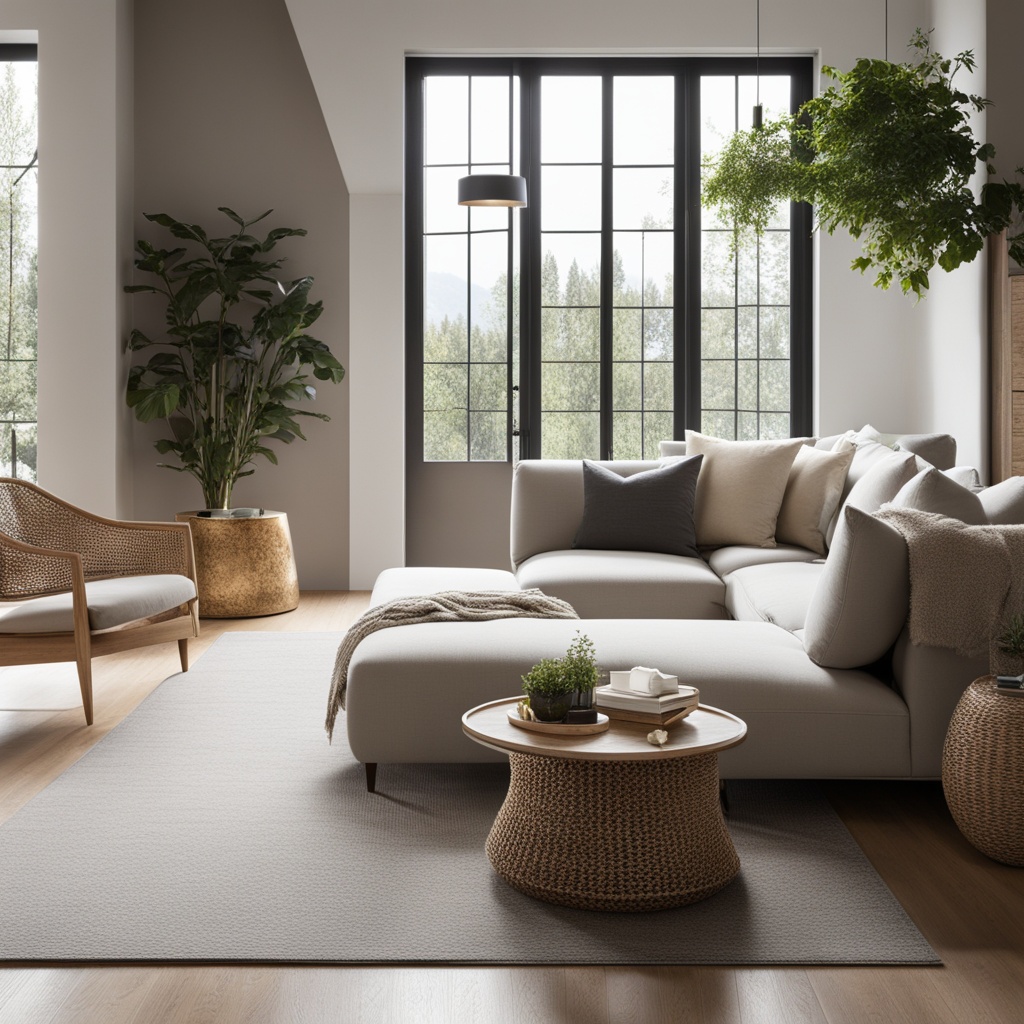
The Importance of Natural Light
Natural light is vital in Nordic interiors. Big windows let in sunlight, making rooms bright during long, dark winters. White walls and light wood floors bounce this light around, making spaces feel open. Sheer curtains let in light but also keep things private.
Hygge: The Art of Coziness
Hygge, a Danish idea of coziness, is central to Scandinavian living rooms. It’s about making a warm, welcoming space. Soft lighting, plush throws, and snug textiles add to the comfort. Fireplaces are great for gathering on cold nights.
| Element | Purpose | Examples |
|---|---|---|
| Neutral Colors | Create calm atmosphere | Whites, grays, light pastels |
| Natural Materials | Add warmth and texture | Wood, stone, wool |
| Sustainable Furnishings | Promote eco-friendly living | Solid wood furniture, recycled textiles |
Choosing the Right Color Palette
The Scandinavian color palette is key to a peaceful and welcoming living space. It’s based on the region’s cold climate and love for nature. This style uses light colors to brighten up homes during long, dark winters.

White walls are the base of Nordic design, making rooms feel airy and bright. These neutral colors set the stage for warm tones and modern neutrals. Soft grays, beiges, and pale blues are common in Scandinavian design.
To add depth, think about using accent colors. Dusty pink, forest green, and warm orange can make a space lively without making it too busy. Pick 3 to 5 colors for your palette to keep things balanced and consistent.
| Color Category | Examples | Purpose |
|---|---|---|
| Base Colors | White, cream, light gray | Create a bright, open feel |
| Neutrals | Beige, soft blue, muted green | Add warmth and texture |
| Accent Colors | Dusty pink, terracotta, deep blue | Provide visual interest |
| Wood Tones | Birch, oak, walnut | Bring natural elements indoors |
Balance warm and cool tones for a look that’s in harmony. By picking your colors carefully, you’ll make a Scandinavian-inspired space that’s both modern and timeless.
Natural Materials: The Foundation of Scandinavian Style
Scandinavian design loves natural materials. These materials make spaces feel cozy and welcoming. This style became popular in the 1950s. It values simplicity and functionality.
Wood: The Heart of Nordic Design
Light wood tones are key in Scandinavian interiors. Furniture and floors often use pine and oak with soft colors. These woods bring nature inside, ideal for long, dark winters.
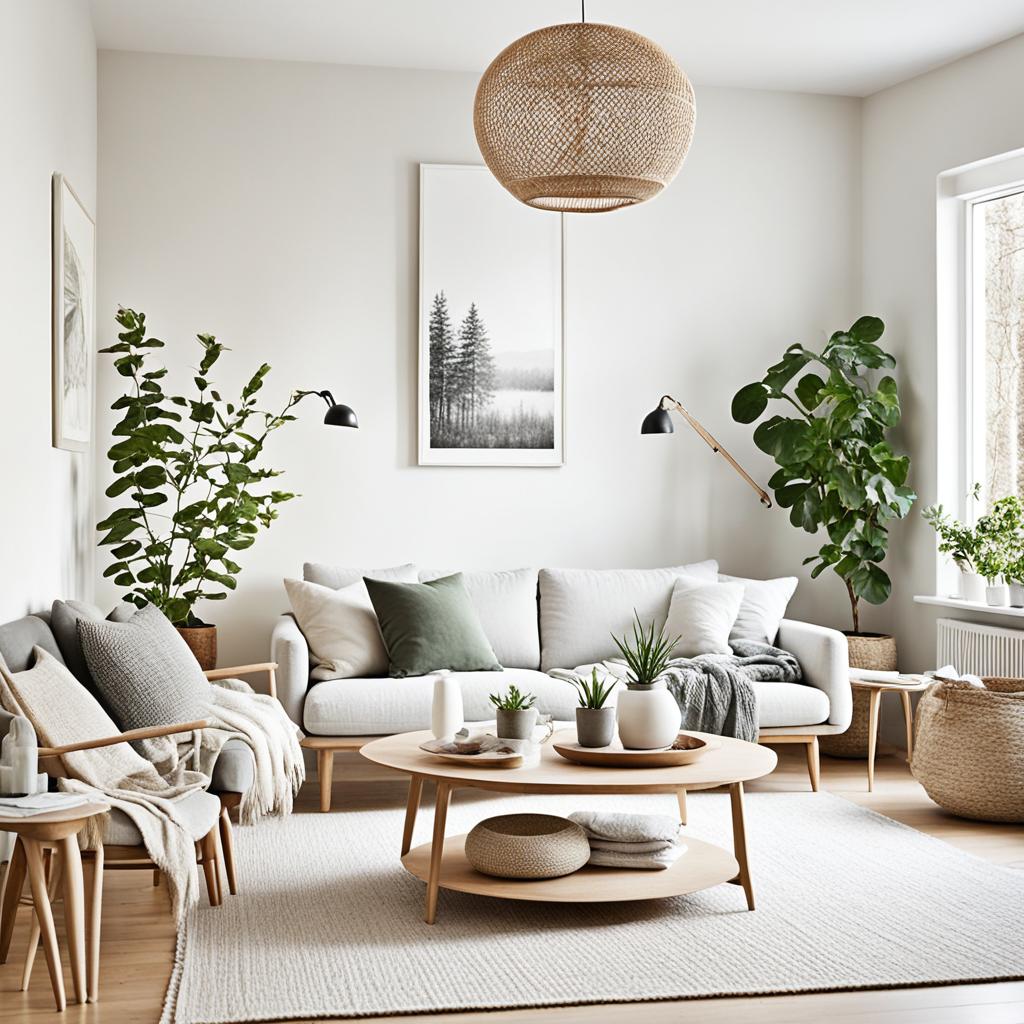
Stone and Marble Accents
Stone and marble add beauty to Nordic spaces. They create interesting textures that look great with wood. A marble coffee table or stone fireplace can be a standout in a Scandinavian living room.
Incorporating Textiles
Textiles are important for adding warmth and coziness. Wool, linen, and cotton make spaces feel snug. Throws and rugs with natural textures bring in the hygge feeling of Scandinavian homes.
Using sustainable materials is a big part of Scandinavian design today. This focus on eco-friendly choices matches the style’s simple and nature-connected values. By mixing these elements, you can make a space that looks great and follows Nordic design.
Furniture Selection for a Scandinavian Living Room
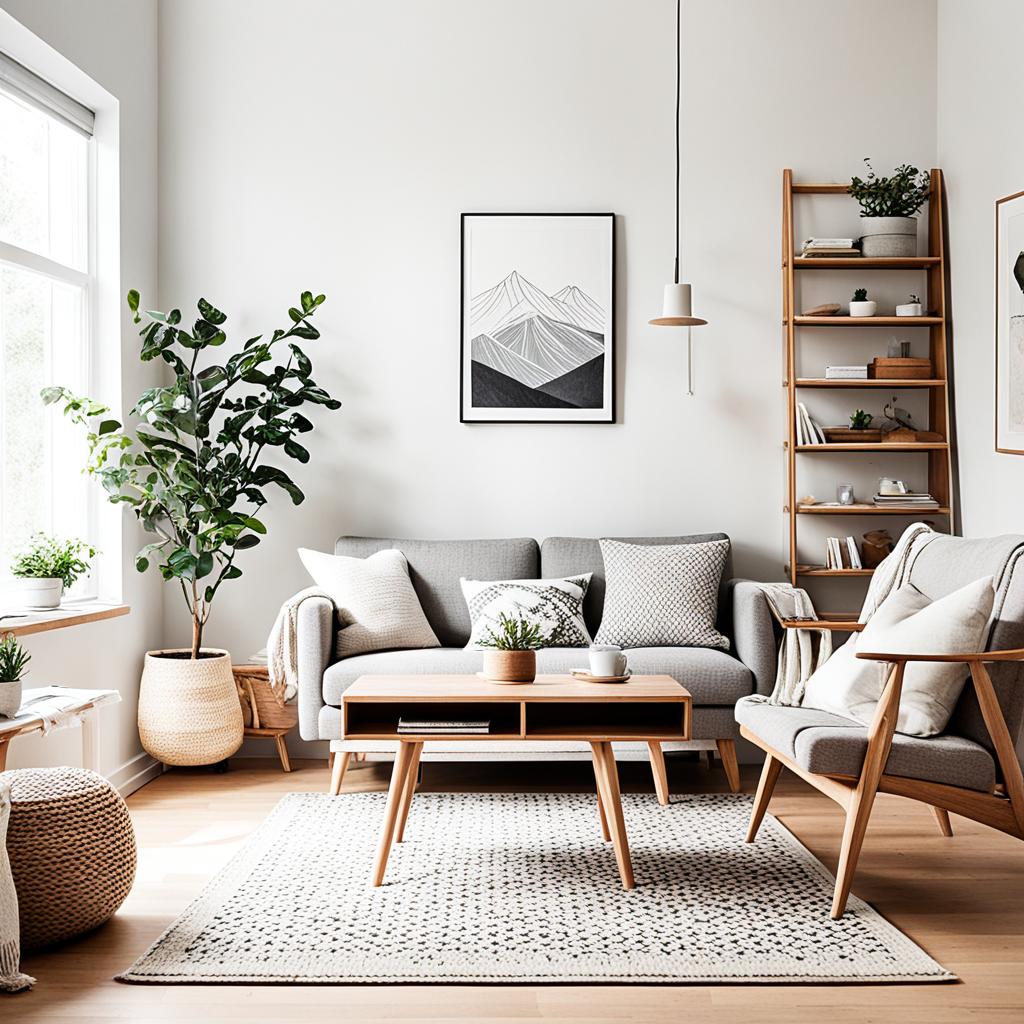
Since the 1950s, Scandinavian design has won over many homeowners. The secret to a cozy Scandinavian living room is choosing the right furniture. This style is all about clean lines, being practical, and keeping things simple. It’s ideal for those who love simplicity and comfort.
When picking furniture for your Scandinavian look, focus on pieces that are both beautiful and useful. Danish furniture is famous for its simple elegance and practicality. Choose items made from light wood like oak or birch. They bring warmth to the room but keep it feeling fresh and open.
Mid-century modern furniture is a great match for Scandinavian decor. These pieces often have organic shapes and tapered legs, making them look light and airy. For those on a budget, IKEA offers many Scandinavian-inspired designs. These pieces capture the Nordic style without costing too much.
Think about adding these key items:
- A comfy sofa in neutral colors
- Armchairs with wooden frames and sleek designs
- A coffee table with clean lines and places to store things
- Storage solutions like bookcases or sideboards
The aim is to make your space feel open, welcoming, and free from clutter. By choosing furniture that follows Scandinavian design, you’ll get a living room that’s both stylish and cozy.
Lighting: Creating Ambiance in Your Nordic Space
Lighting is key to making the perfect Scandinavian living room. The right mix of natural and artificial light can turn your space into a cozy Nordic haven.
Maximizing Natural Light
Natural light is essential in Scandinavian design. Use sheer, light-filtering curtains to let soft, diffused light in while keeping your room private. This makes your space bright and serene, just like Nordic interiors.
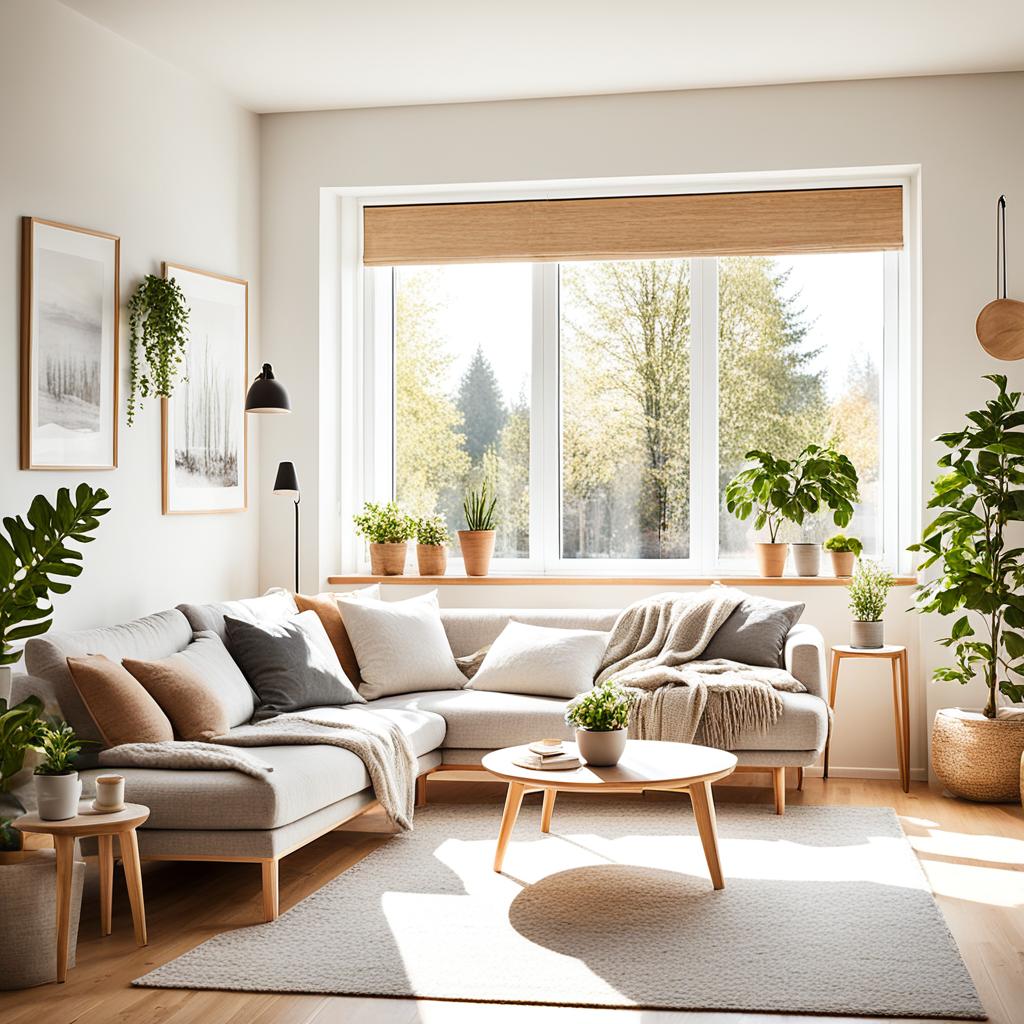
Choosing Statement Lighting Fixtures
Statement lighting fixtures are important in Scandinavian living rooms. Pick pieces that are both functional and beautiful. Pendant lights or sculptural floor lamps can add interest and provide enough light.
Soft Lighting for Cozy Evenings
For long Nordic nights, soft lighting creates a warm, inviting feel. Table lamps, floor lamps, and candles add to the cozy vibe. Using dimmers lets you adjust the light for the perfect hygge mood.
| Lighting Type | Benefits | Examples |
|---|---|---|
| Natural Light | Brightens space, creates serene atmosphere | Sheer curtains, large windows |
| Statement Lighting | Adds visual interest, provides focal point | Pendant lights, sculptural floor lamps |
| Soft Lighting | Creates cozy ambiance, adjustable mood | Table lamps, candles, dimmers |
By using these lighting types, you can make a Nordic space that’s both useful and welcoming. Aim for a balance between natural light, statement lighting, and soft, warm lighting for cozy evenings.
Accessorizing with Scandinavian Flair
Scandinavian design loves minimalist decor with a focus on simplicity. When picking items for your living room, go for things that look good and are useful. Choose sleek storage and decor that also has a purpose, keeping things tidy.
Add warmth and texture with cozy throw blankets and cushions. Pick items in neutral colors like beige, cream, or gray. Simple patterns like geometric shapes or soft florals work well. These add a cozy feel without making the room feel crowded.
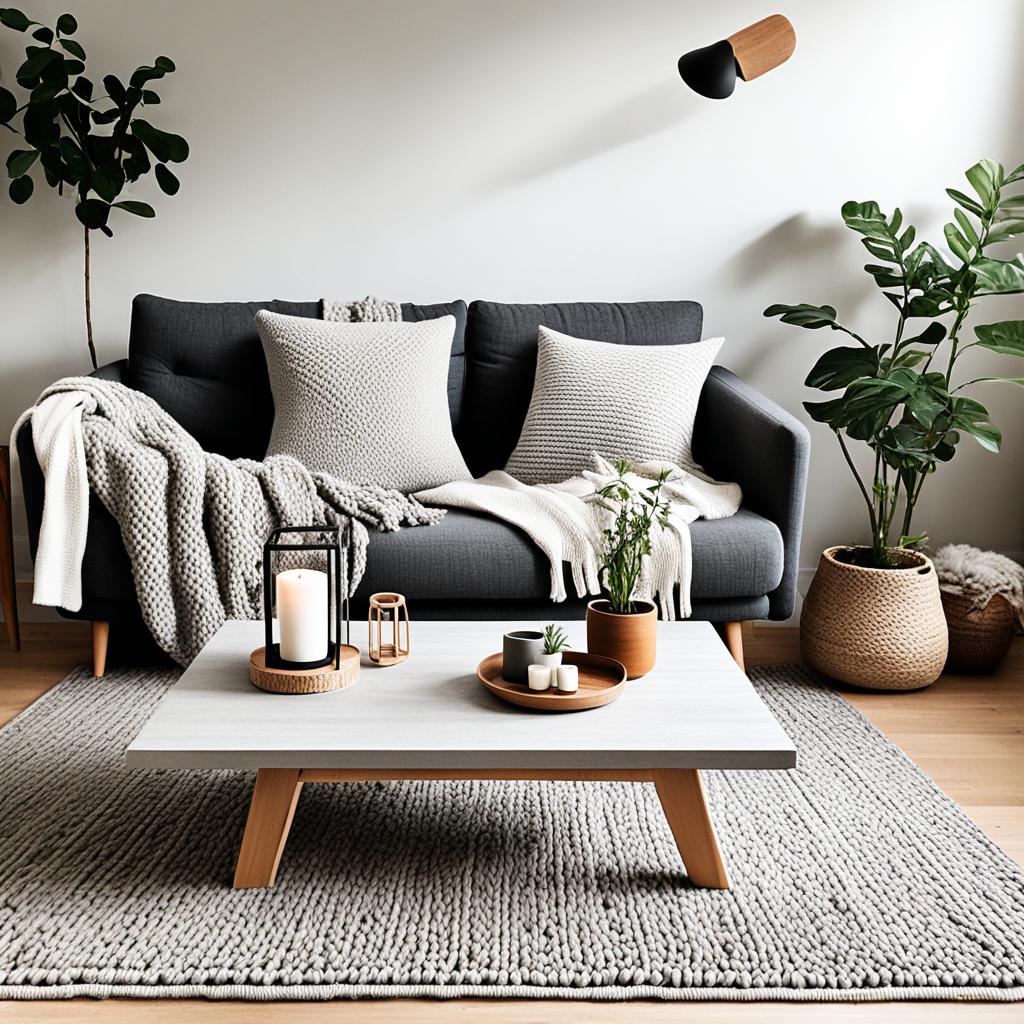
- Muuto: Offers modern lighting and furniture
- Menu: Specializes in minimalist home decor
- Hay: Provides colorful yet simple accessories
- Ferm Living: Creates unique planters and textiles
In Scandinavian design, less is more. Pick a few special items that show your style but keep things simple. Look for things like side tables that are also stools or coffee tables with hidden storage. These are great for saving space and staying organized.
| Accessory Type | Key Features | Popular Materials |
|---|---|---|
| Rugs | Neutral colors, simple patterns | Wool, cotton, jute |
| Lighting | Minimalist silhouettes, rounded shades | Wood, metal, stone |
| Decorative Objects | Functional, sculptural forms | Ceramic, glass, wood |
| Textiles | Soft textures, muted colors | Linen, wool, cotton |
Bringing Nature Indoors: Plants in Scandinavian Decor
Scandinavian design loves the beauty of nature. Indoor plants are key in making spaces feel alive and fresh. Let’s see how to bring the outdoors in with style.
Choosing the Right Indoor Plants
Choose plants that do well inside and fit the Scandinavian look. The Rubber Plant (Ficus Elastica) can grow up to 40 inches tall, adding a green touch. Snake Plants can get 6-8 feet tall, making a big impact in any room. Aloe Vera, known for being tough, can reach 40 inches and handle some neglect.
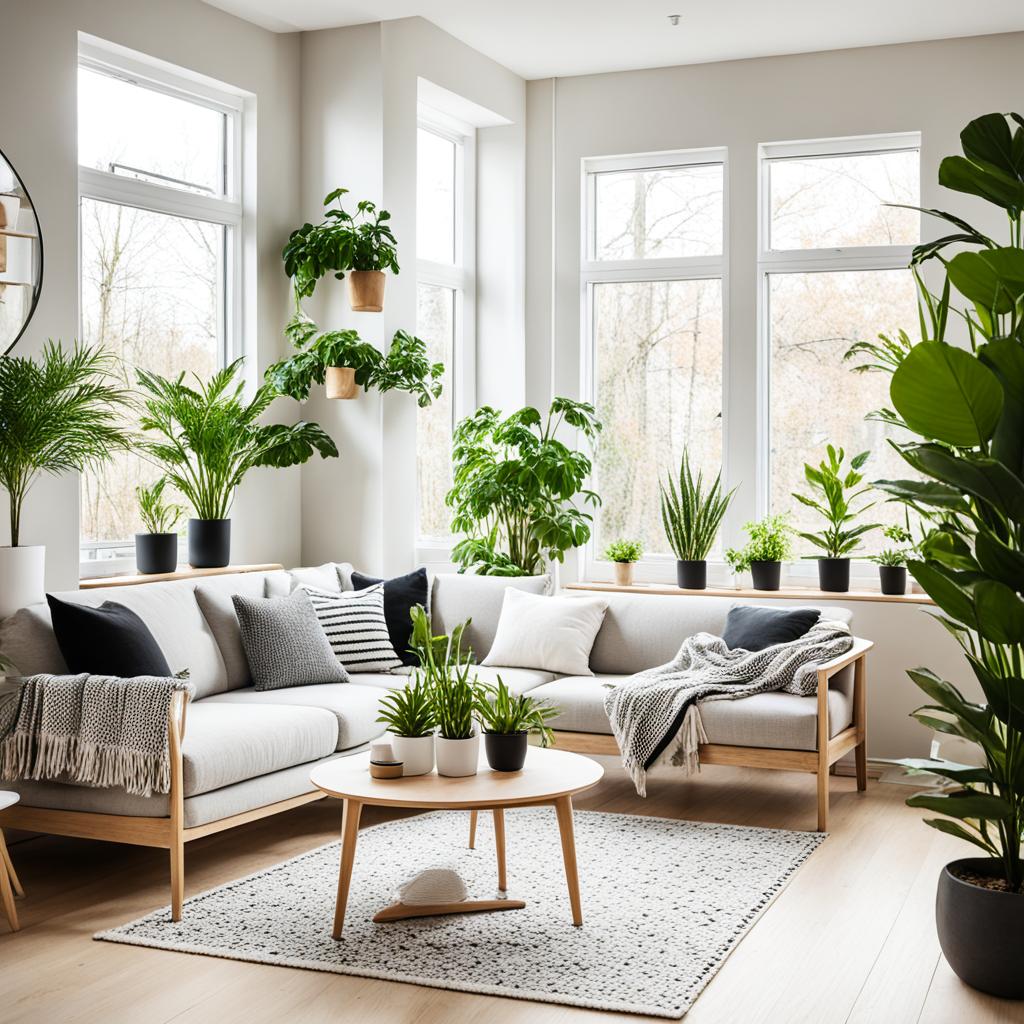
Creative Plant Display Ideas
Display your plants in ways that boost your decor. Use pots in earthy tones to match Scandinavian colors. Big plants or tall trees like the Monstera Deliciosa are great as focal points. Put smaller plants on shelves or in hanging planters for a layered effect.
Incorporating Natural Elements
Bring in more nature-inspired accents besides plants. Use wooden furniture, stone vases, or organic textiles for a cohesive look. These elements together create a calm, nature-inspired space that captures Scandinavian design’s essence.
| Plant | Height | Care Level |
|---|---|---|
| Rubber Plant | 40 inches | Moderate |
| Snake Plant | 6-8 feet | Low |
| Aloe Vera | 40 inches | Low |
| Monstera Deliciosa | Varies | Moderate |
By carefully choosing and showing off plants, you can make a Scandinavian-inspired living space that’s stylish and connected to nature. Remember, in this design, plants are more than just decorations. They’re living, breathing parts of your home.
Creating a Cozy Atmosphere: The Hygge Touch
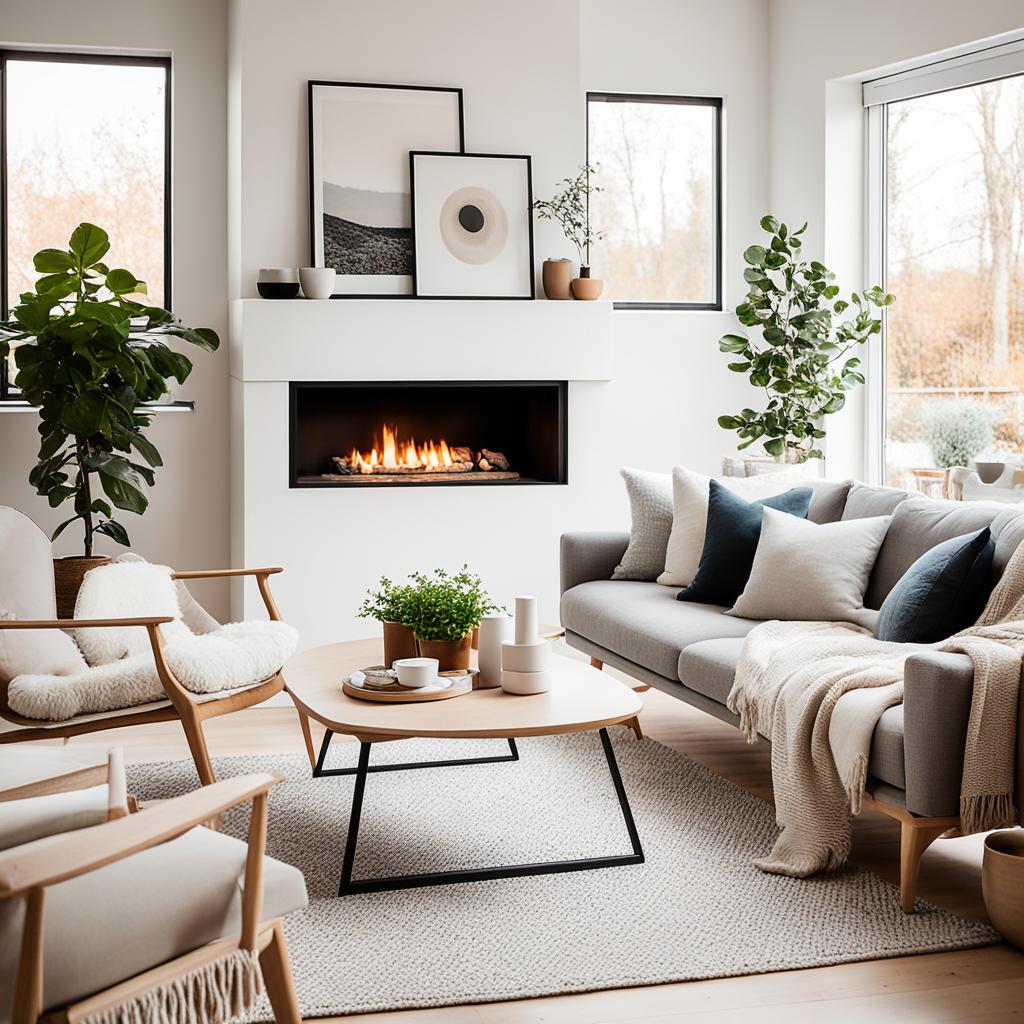
The hygge lifestyle, pronounced “hoo-ga,” brings warmth and comfort to cozy modern spaces. This Danish concept turns living rooms into havens of relaxation and well-being. Embracing hygge in your home creates an inviting atmosphere that nurtures both body and soul.
To infuse your space with hygge, focus on a neutral color palette. Soft grays, gentle beiges, and creamy whites set a calm tone. Add layers of texture with chunky knit throws, plush pillows, and woven rugs. These elements enhance the visual and tactile warmth of your living area.
Lighting plays a crucial role in crafting cozy interiors. Opt for warm-toned bulbs, table lamps, and string lights. Candles are essential, casting a soft glow that embodies the hygge concept. Natural elements like wood, stone, and plants connect your indoor space to nature, fostering a soothing ambiance.
Key Elements of Hygge-Inspired Spaces
- Comfortable furniture (plush sofas, armchairs)
- Cozy nooks for relaxation
- Personal touches (family photos, heirloom items)
- Multi-functional, quality decor
- Natural fiber textiles
Remember, hygge is about creating a multi-sensory experience. Engage all senses with pleasant scents, soft music, and varied textures. Declutter regularly to maintain simplicity, a core principle of hygge design. By balancing minimalism with personal touches, you’ll craft a living space that truly embodies the hygge lifestyle.
| Hygge Element | Examples | Benefits |
|---|---|---|
| Soft Lighting | Candles, warm-toned lamps | Creates a calming atmosphere |
| Cozy Textiles | Knit throws, plush pillows | Enhances comfort and warmth |
| Natural Materials | Wooden furniture, stone accents | Connects indoor space with nature |
| Personal Touches | Family photos, cherished books | Adds character and warmth |
Conclusion
Since the 1950s, Scandinavian design has won the hearts of homeowners around the globe. It’s a mix of style and comfort. This modern rustic style focuses on simplicity, functionality, and nature. It makes spaces look good and work well.
To make your living room cozy like Nordic homes, follow key design rules. Use natural materials like wood and stone. Choose a color scheme that’s calm, and let in lots of natural light for that Scandinavian feel.
Choosing a minimalist style or adding rustic touches like exposed brick or wooden beams is up to you. The goal is to make your space feel welcoming. With the right furniture, lighting, and decor, you can make a living room that’s both stylish and peaceful.
